
THE ULTIMATE BIRTHSTONE GUIDES
Discover the gemstones of your birth month with the Ultimate Birthstone Guides! From January to December, uncover the knowledge of your modern and traditional birthstones that you probably never knew existed.

The Luminous Birthstones of May: Emeralds and Agates
May celebrates not just the arrival of spring but also two spectacular birthstones: the illustrious Emerald and the multifaceted Agate. Beyond their beauty, these gemstones are steeped in history and symbolism, each carrying its own set of fascinating stories and meanings. Whether you’re drawn to the rich green of the Emerald, a symbol of renewal and prosperity, or the intriguing patterns of the Agate, known for its grounding and protective qualities, there’s much to discover. Join us as we delve into the enchanting world of May’s birthstones — a treasure trove of facts and lore awaits anyone born under this vibrant spring month!
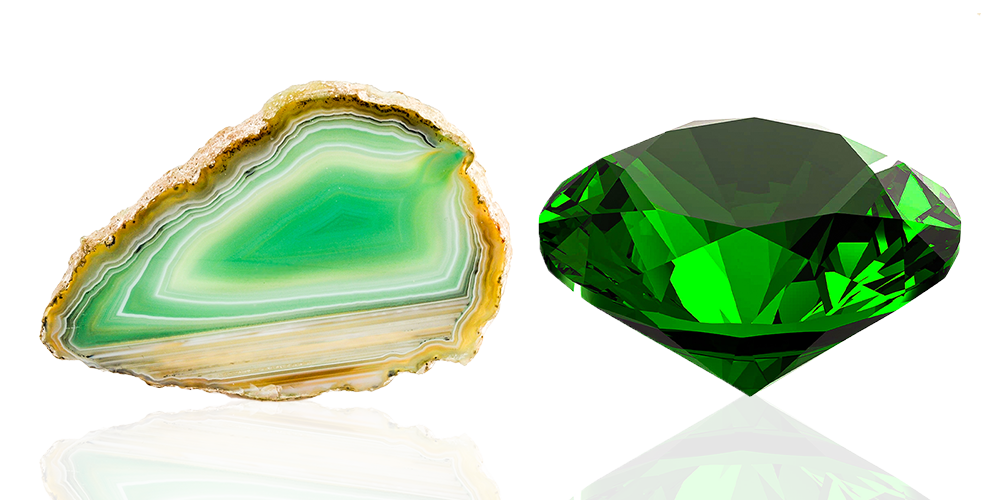
Emerald & Agate, Chosen Specifically for May
Why Does May Have Two Distinct Birthstones?
Did you know that some months boast more than one birthstone? May is one such month, graced by both the lush Emerald and the enchanting Agate. Historically, traditional birthstones were those most commonly linked with each month since the early 20th century. In contrast, modern birthstones, such as those we often recognize today, were officially designated by the Jewelers of America in the 1950s.
Eager to uncover more about the captivating world of birthstones? Dive deeper with our Ultimate Birthstone Guide!

Green with Envy: The Alluring Charm of Emeralds
Origins & Features of Emeralds
Emeralds, the celebrated modern birthstone of May, derive their name from the Old French word “esmeralde,” originating from the Greek “smaragdos,” meaning ‘green stone.’
Belonging to the beryl family, emeralds owe their mesmerizing green hue to traces of chromium and sometimes vanadium. The most sought-after emeralds flaunt a bluish-green to pure green color. Unique among gemstones, emeralds are always green, setting them apart in a world of color variety. Most emeralds display imperfections visible to the naked eye, serving as a hallmark of authenticity against lab-created counterparts.
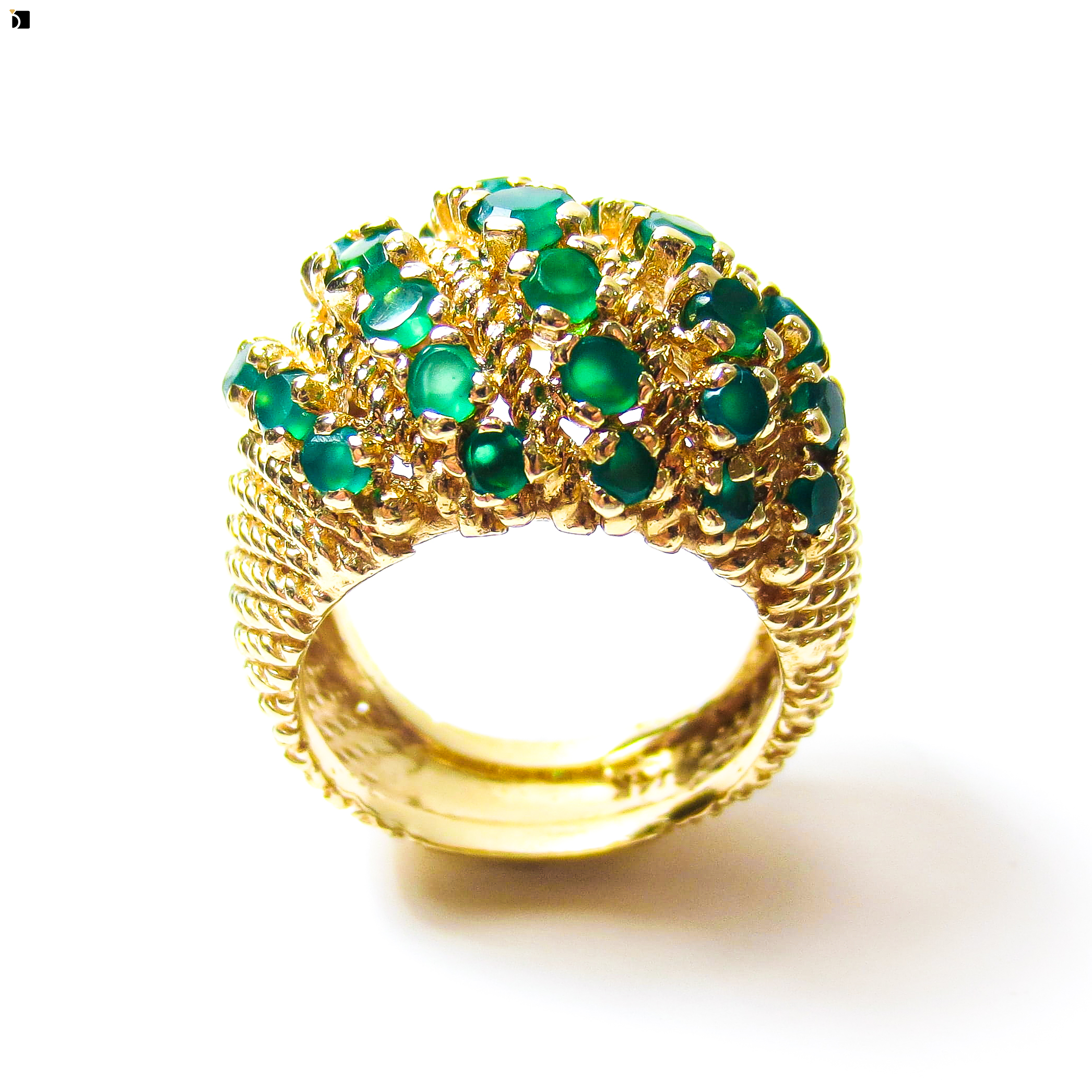
Remarkably, emeralds are 20 times rarer than diamonds, making them significantly more valuable.
As the crown jewel of the beryl group, emeralds are esteemed alongside diamonds, rubies, and sapphires as one of the four precious gemstones, each celebrated for their extraordinary beauty and rarity.
When Emerald Became May’s Official Birthstone
While emeralds had long been linked to the month of May through medieval traditions, their official status as the birthstone for May wasn’t solidified until the early 20th century. In 1912, the American National Retail Jewelers Association—now known as Jewelers of America—released a standardized list of birthstones, formally establishing the emerald as May’s designated gem. Interestingly, before this official recognition, amethyst had briefly taken emerald’s place as May’s birthstone. However, due to emerald’s enduring popularity and historical significance, it was reinstated and has remained the modern birthstone for May ever since.
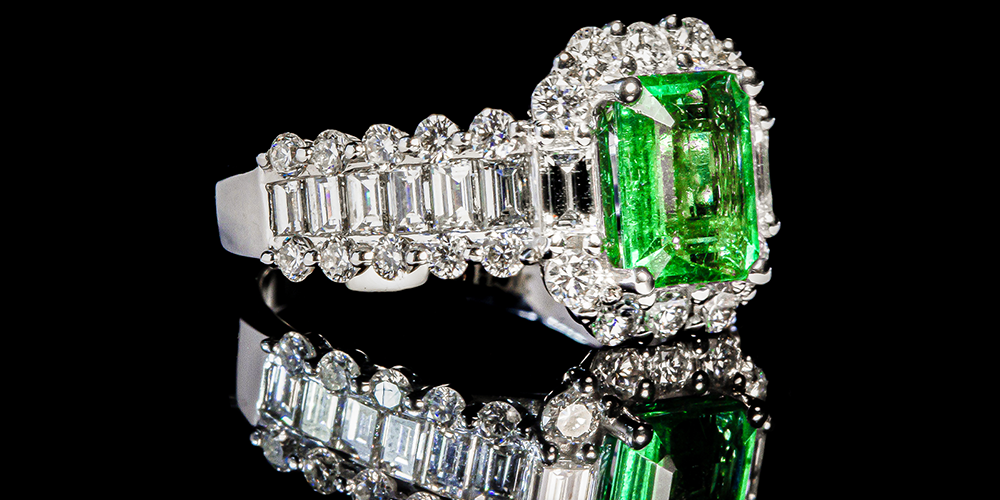
The Rich History and Deep Symbolism of Emeralds
Cultural Significance: Emeralds in Lore and Legend
Emeralds, the captivating green gemstones, are sourced from around the globe, with the most renowned mines located in Colombia. Other significant producers include Zambia, Afghanistan, and Brazil.
These splendid gemstones are steeped in symbolism, representing good fortune, growth, renewal, peace, balance, well-being, and hope. Historically, emeralds were cherished not only for their beauty but also for their purported mystical properties. The ancient Greeks, including the philosopher Aristotle, believed that wearing emeralds could prevent epilepsy. Additionally, these gemstones were thought to protect wearers from danger and ensure fidelity, warding off unfaithful lovers.
Buying the Right Emerald For You
When selecting the perfect emerald, it’s important to consider the same essential qualities used to evaluate all precious gemstones: Color, Clarity, Cut, and Carat. Emeralds, however, possess distinct characteristics that set them apart—most notably their rich, green hue. Among the Four C’s, color is by far the most important factor, with the most prized emeralds showcasing a vivid green with bluish undertones.
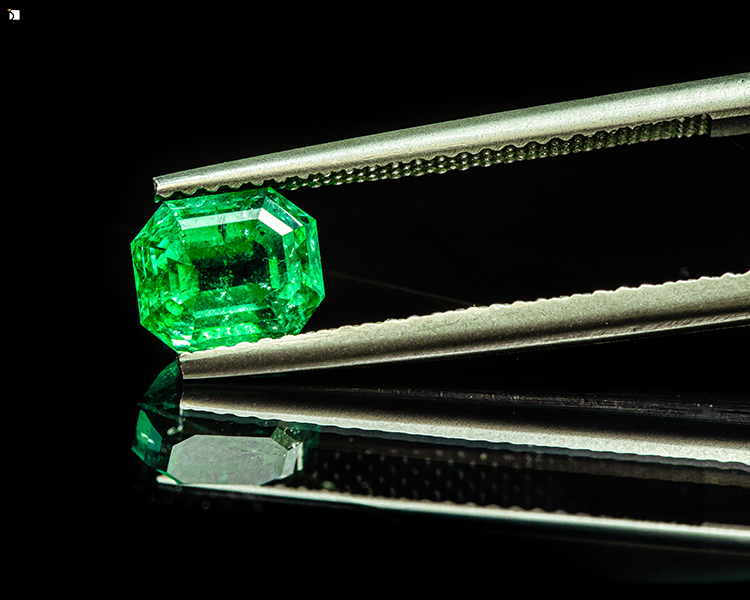
While inclusions, often called jardin, are common and generally accepted, the overall clarity still plays a role in value, especially in stones that appear eye-clean. A well-proportioned cut can enhance color and reduce the visual impact of inclusions, with the emerald cut being a favored style for its elegance and compatibility with the stone’s natural shape. Though larger carat sizes command higher prices due to rarity, it’s the combination of intense color and transparency that truly defines an exceptional emerald.
Today, emeralds continue to enchant with their vibrant hues and historical mystique. If you know someone born in May or celebrating a 55th wedding anniversary, consider an emerald as a gift. Whether it’s for its magical properties or simply its stunning color, an emerald makes a truly spectacular present.
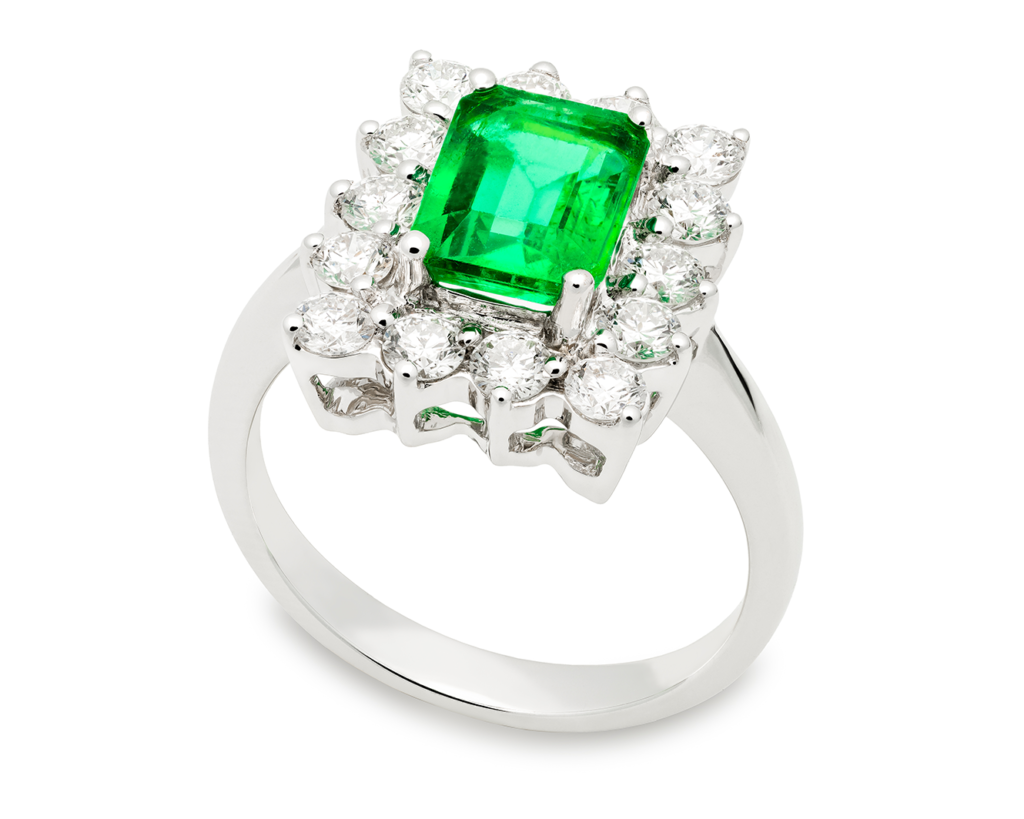

Essential Tips for Maintaining and Caring for Your Emeralds
Understanding Proper Emerald Care
Emeralds, though stunning, are the softest and most delicate of the precious gemstones, with a hardness rating of 7.5 to 8 on the Mohs scale. While this hardness is generally adequate for jewelry, emeralds often contain inclusions and fractures that may reach the surface, increasing their susceptibility to brittleness and breakage. This is especially crucial to remember if your emerald is set in high-impact pieces like rings or bracelets, which typically endure more wear and tear due to their placement on the hands and wrists.
Taking proper care of emeralds is vital. Most emeralds are treated with oil, and sometimes resin, to enhance their appearance by masking imperfections and boosting their color. To clean your emeralds, simply rinse them in warm water and pat dry with a soft cloth. Avoid using chemicals, heat, or ultrasonic cleaners, as harsh cleaning methods can remove the oil treatment from the gemstone. Should the oil be stripped, some jewelers offer re-oiling services to restore their luster.
For more in-depth advice on the care and repair of emerald jewelry, or to learn more about emerald gemstones, be sure to check out our Ultimate Emerald Guide.
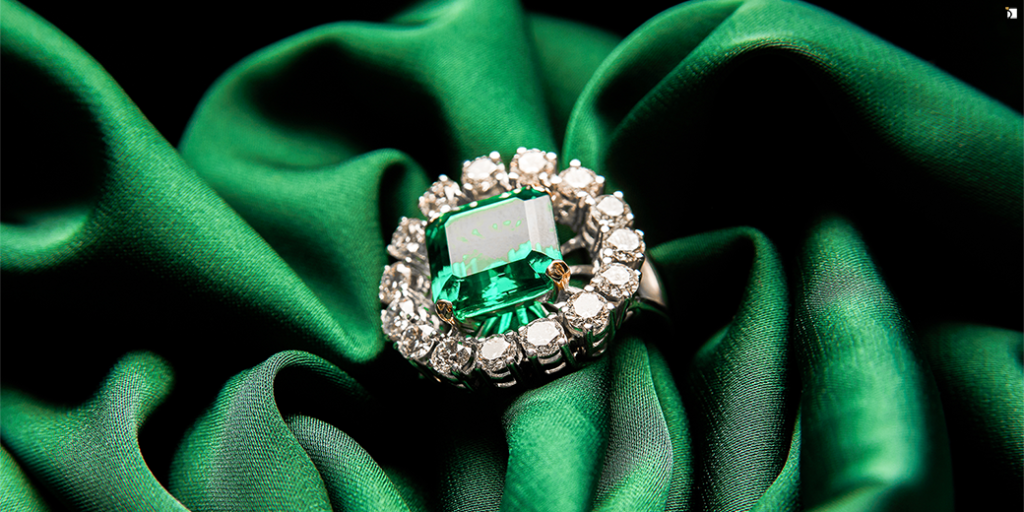

Agates from Around the World: A Tapestry of Color and Pattern
Origins & Features of Agates
The enchanting Agate, a traditional birthstone of May, traces its roots back to ancient Greece and Rome. This gemstone’s name originates from its first known location of mining, the Achates River in Sicily, over 3000 years ago.
Agates set themselves apart from other crystal gemstones by their uniqueness—no two stones are alike. As a variety of Chalcedony, which belongs to the Quartz family, agates exhibit a micro-crystalline, compact form. To qualify as an agate, the stone must display distinctive banding or wavy patterns of vein bands within the mineral rock. The clarity and sharpness of these bands significantly enhance the stone’s value.
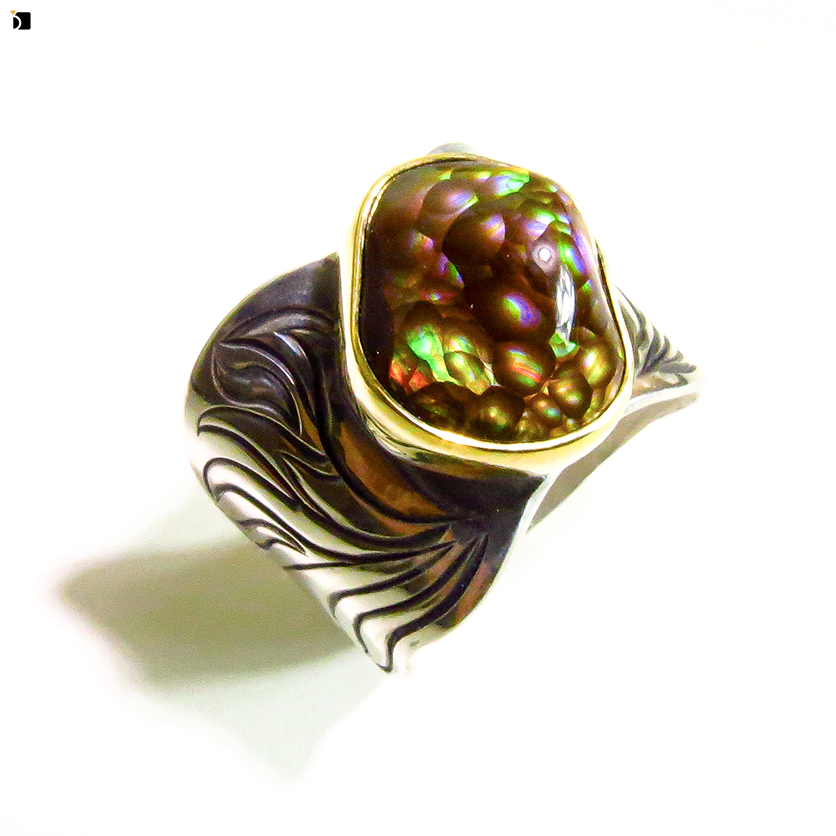
Fire Agate Ring
The finer and sharper the banding is of an agate, the more valuable it becomes.
Agates dazzle in a spectrum of colors including green, red, yellow, blue, pink, brown, white, black, and even translucent and fluorescent hues. Each stone’s unique coloration and patterning arise from mineral traces such as iron, nickel, chromium, titanium oxides, among others. Despite their varied appearance, some patterns recur, such as the Fire Agate, Eye Agate, and Iris Agate, each with its own distinct allure.
Found in cavities within eruptive rocks or ancient lavas, agates are a global phenomenon, cherished for their incredible diversity and natural beauty.
When Agate Became May’s Traditional Birthstone
Agate became traditionally associated with the month of May between the 15th and 20th centuries, during a time when the concept of birthstones was evolving from astrological connections to monthly designations. In ancient Greece and Rome, birthstones were more commonly linked to zodiac signs than calendar months. As the tradition of assigning specific gemstones to each month took shape over the centuries, agate—alongside emerald—emerged as one of May’s birthstones. This pairing became part of the traditional birthstone list and remained a recognized association well into the early 20th century, celebrated for agate’s grounding energy and distinctive beauty.

Iris Agate
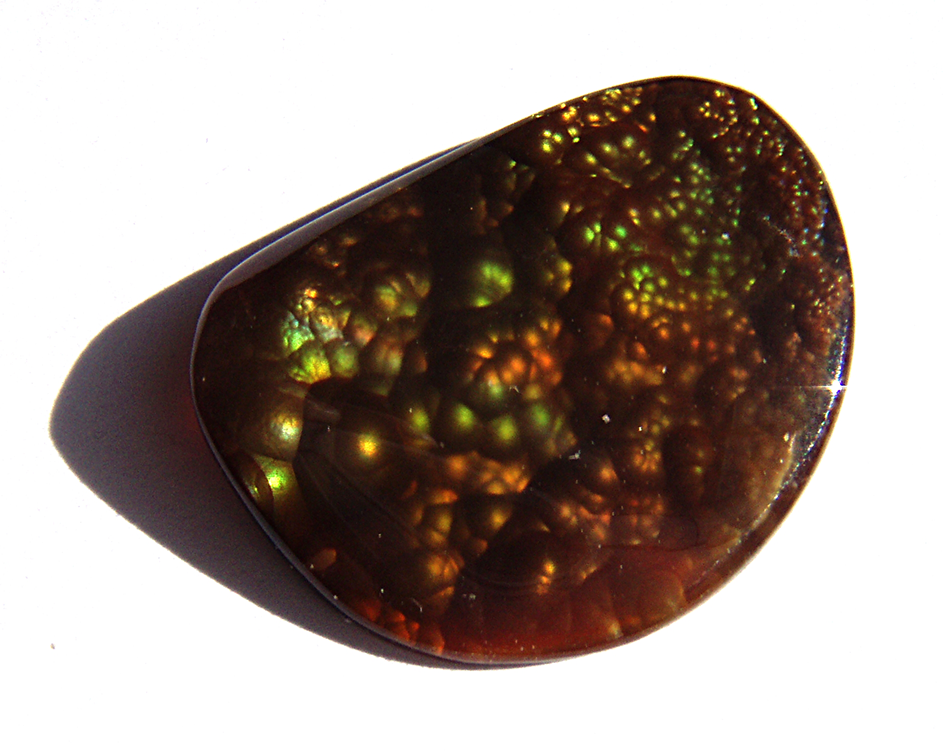
Fire Agate
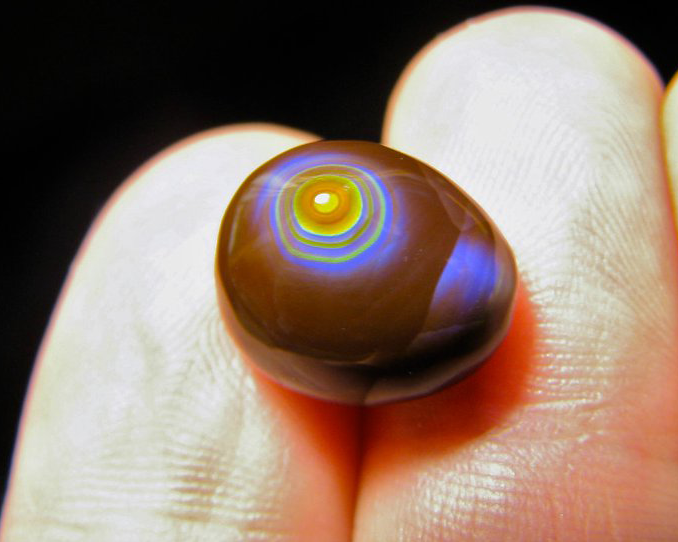
Fire Eye Agate
The Rich History and Deep Symbolism of Agates
Cultural Significance: Agates in Lore and Legend
Agates are not just beautiful natural gems; they are powerful symbols of courage, protection, strength, and balance. Known for their transformative properties, agates can convert negative energy into positive, bringing a soothing and calming presence. Like emeralds, agates are celebrated for their healing qualities, particularly in soothing inner anger and alleviating anxiety. Both agates and emeralds are reputed to foster harmony in relationships.
The fascinating history of agates stretches back to Ancient China, where these stones were once believed to be fossilized horse brains or the remnants of blood spilled in battles. During the Renaissance, the allure of agates surged as collecting agate cups became a prestigious hobby among the elite. This storied past highlights the enduring allure and mystical qualities of agates, making them a treasure in both historical and modern contexts.
Buying the Right Agate For You
When choosing the perfect agate, it’s important to look beyond the basic Four C’s—Color, Clarity, Cut, and Carat—and pay close attention to the stone’s unique patterns and polish. Agate is celebrated for its diverse colors and mesmerizing banded or inclusional patterns, with vivid natural hues and intricate designs commanding the highest value. While clarity is generally important, some types—like moss, dendritic, and plume agates—are prized specifically for their internal formations.
The cut of an agate should highlight its most striking visual features, whether that’s in a polished cabochon, a boldly sliced slab, or an intricately carved decorative piece. Although size can influence value, the overall appeal of the agate’s color, pattern, and craftsmanship has a much greater impact. A high-quality polish is essential, bringing out the depth and luster that make agate such a captivating gemstone.
Today, agates remain beloved for their one-of-a-kind patterns and rich symbolic meaning. If you’re shopping for someone with a May birthday or simply want to give a gift that feels personal and grounding, an agate makes a thoughtful choice. Whether admired for its natural artistry or its calming energy, an agate offers a beautiful and meaningful way to celebrate someone special.

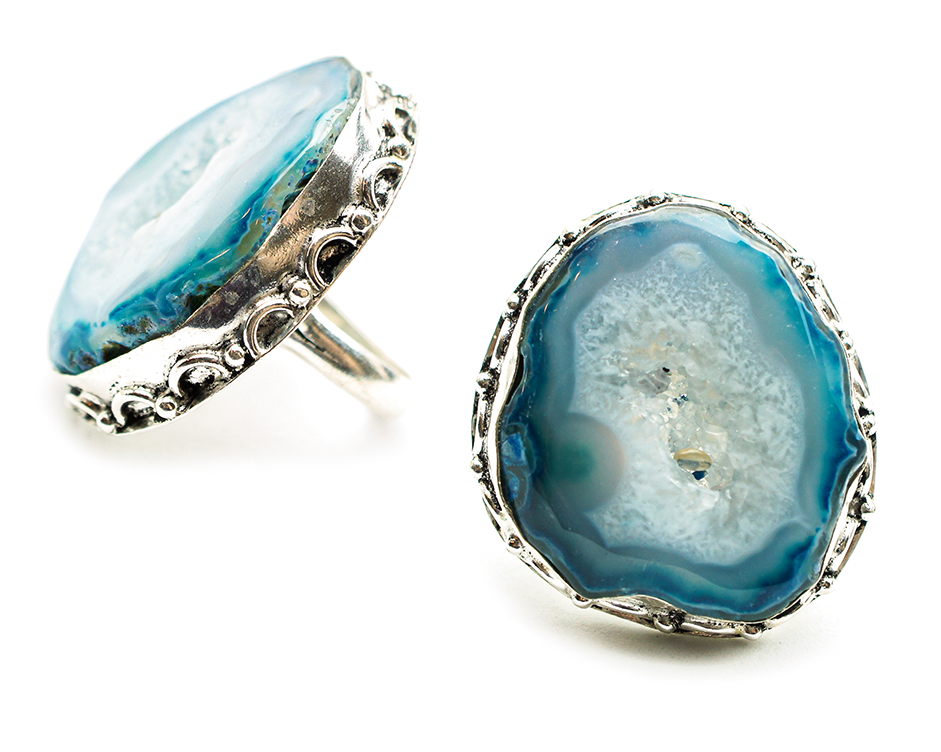
Expert Tips for Maintaining and Caring for Your Agates
Understanding Proper Agate Care
Agates are impressively durable, boasting a hardness of 6.5 to 9 on the Mohs scale. For context, consider quartz, which ranks between 7 and 7.5 and is commonly found in household dust. This seemingly innocuous dust can strip the polish off your table and the finish from your car due to its hardness. At the top of the scale is the diamond, with a maximum hardness of 10, while the softest mineral, talc, can be scratched by a mere fingernail. Understanding these hardness levels is crucial for properly caring for your agate jewelry, ensuring that it remains free from scratches and retains its lustrous beauty.
Though generally more affordable, agates are nonetheless stunning and make exceptional centerpiece stones for any type of jewelry. Their rich colors and unique patterns ensure that agate jewelry remains a favorite for those seeking both beauty and durability in their adornments.
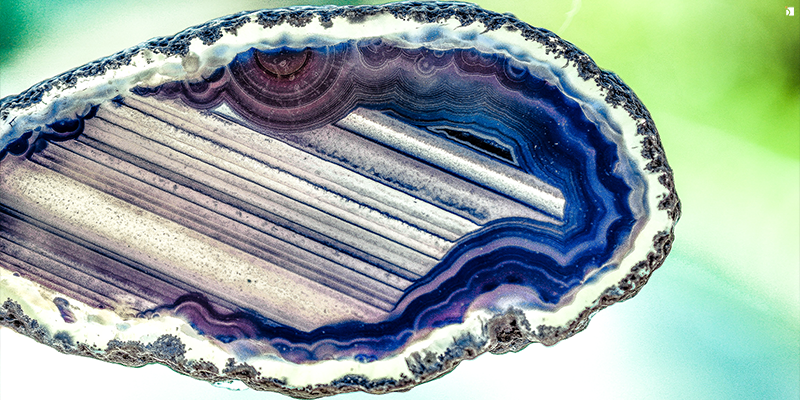
Originally Published February 28, 2023, Updated and Expanded April 16, 2025

Revive Your Treasured Emerald or Agate Jewelry
Are you considering the restoration of a beloved piece of birthstone jewelry? You’ve found the perfect place to revive cherished memories.
Gemstones breathe life into any piece of jewelry but are also prone to the most wear and tear. Whether you’re dealing with a loose, lost, or scratched Emerald or Agate, we take the revitalization of your precious items to heart. No matter the gem or the damage, we are committed to making your jewelry shine as brilliantly as the day it was first worn.
Our team of specialists is equipped to meticulously source the precise type of gem needed for your valued piece. We recognize that each gemstone is unique and demands careful, specialized attention. Our Professional Stone Sourcing team ensures that every gem, even those that might typically go unnoticed, is replaced with a stone that matches the original in quality and fit.
Explore our Gemstone Replacement Services page to learn more about how we can help restore your Emerald or Agate to its former glory.
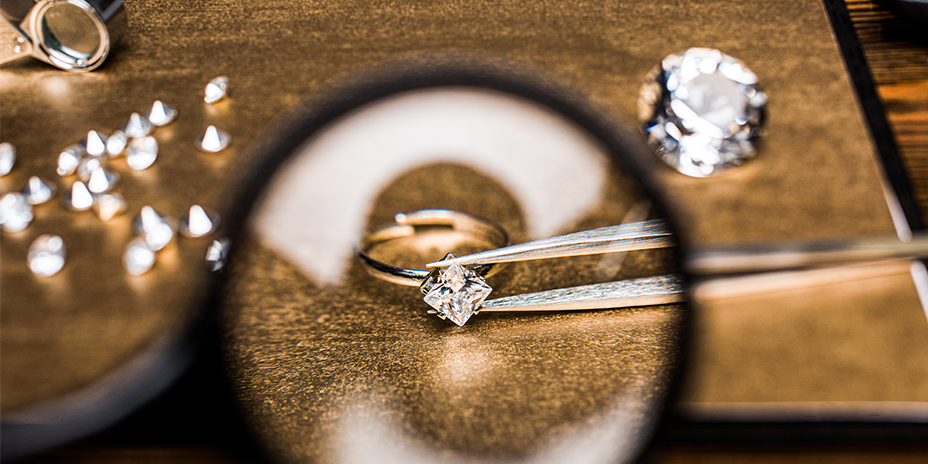

Resources:
- Emerald Birthstone Information: https://www.americangemsociety.org/
- Emerald Birthstone Information: https://www.gia.edu/
- May Birthstone Information: https://www.gemsociety.org/
- Agate Birthstone Information: https://www.cliponearrings.online/
- Fire Agate Ring Photo: https://commons.wikimedia.org/
- Iris Agate Photo: https://commons.wikimedia.org/
- Fire Agate Photo: https://commons.wikimedia.org/
- Fire Eye Agate Photo: https://www.flickr.com/
- Green Agate Necklace Photo: https://commons.wikimedia.org/
Have Questions?
The Ultimate Birthstone Guide
“If you were born in May, your month’s birthstones are Emerald and Agate.
If you didn’t already know, there are some months that have multiple birthstones, whereas some only have one. Traditional birthstones are gemstones that were most commonly associated with its respective month in the early 20th century and even beyond, with Ancient Greek and Roman philosophers associating these gemstones with the star signs. Those that are more commonly known in this day and age are the modern birthstones, which were officially named by the Jewelers of America in the 1950’s.
If you would like to learn more about birthstones in general, visit our Ultimate Birthstone Guide!“
Clean & Polish Services
“A basic clean, polish, and inspection is part of the routine care and maintenance needed to keep your jewelry looking like new. The inspection process includes looking for loose stones, bent prongs, and any damage to the metal or stones that need to be repaired.”
Stone Setting Repair
“A stone setting repair can be a simple re-tipping of a worn prong (which is considered routine care and maintenance) or the complete rebuilding/replacing of a damaged prong. In the case of severe damage, the entire head of the ring may need to be replaced.
Regardless of whether or not the prongs are compromised due to normal wear and tear or a result of accidental damage, we can provide the routine care and maintenance in order to ensure you do not lose a stone in your setting.”
Gemstone Replacement Services
“The process of a Gemstone Replacement is simple enough, yet requires trained eyes to be able to make a flawless switch. We aim to leave no trace of our work, which means not only will your setting be perfected, but the gemstone we choose will complete your jewelry piece effortlessly.”
Explore the Magic of Our Gemstone Services!
We are proud members of the

Our team includes gemologists certified by

